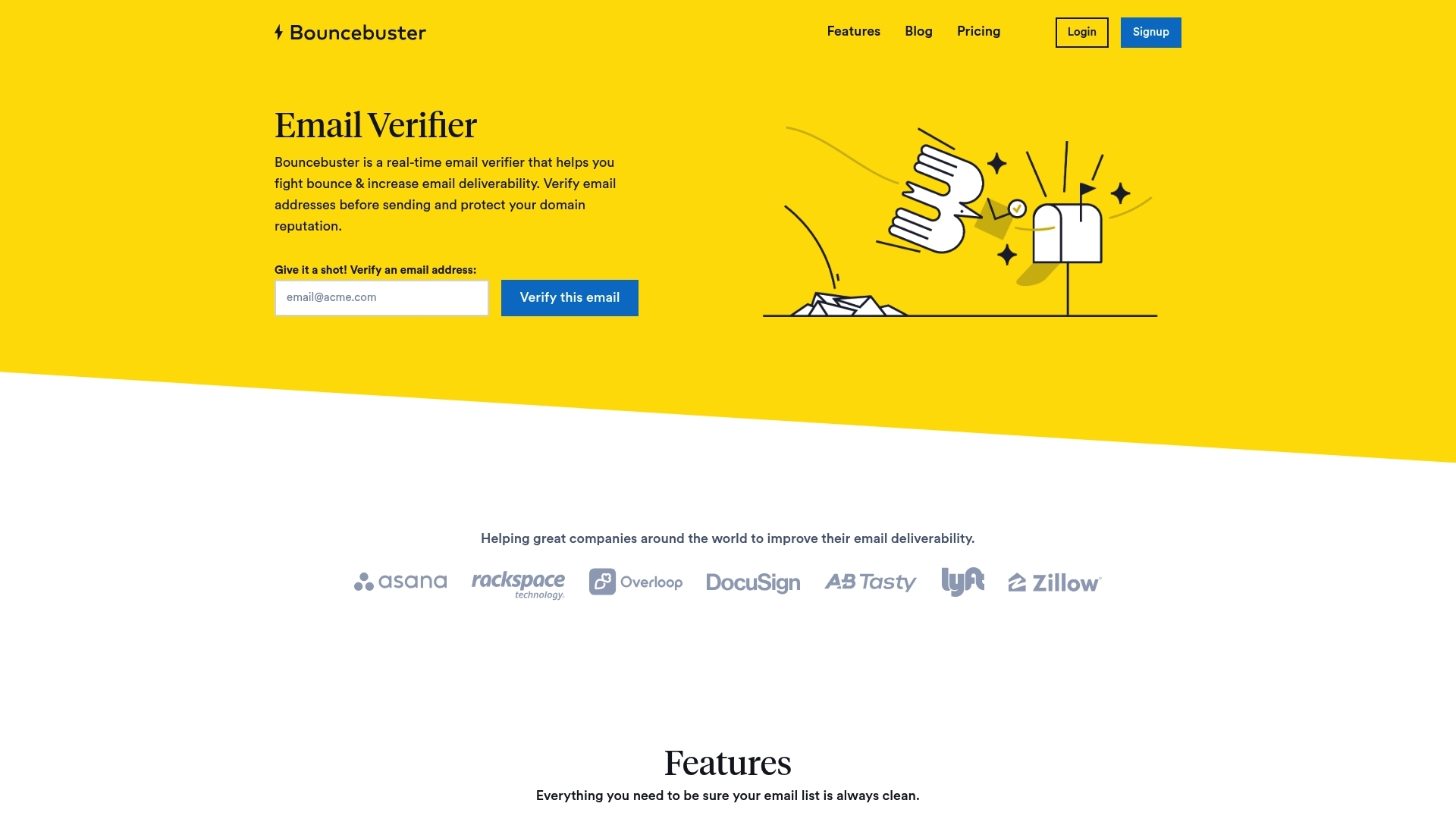Email Address Verification Methods: How Does Email Address Verification Work and Industry Trends
Email remains a critical channel for business communication and marketing, yet its effectiveness depends on the integrity of email lists. Invalid and outdated addresses cause campaigns to suffer from high bounce rates, wasted spend, and lower engagement.
Maintaining accurate contact data is vital for reaching real recipients and preserving sender reputation. Failed deliveries not only disrupt marketing performance but can also trigger blacklisting by major inbox providers. This is why businesses and marketers now view email address verification as an essential process—not just a technical safeguard, but a strategic necessity in a data-driven landscape.
Modern verification methods help identify syntax errors, non-existent domains, and inactive mailboxes before messages go out. By routinely verifying email addresses, companies can improve deliverability, reduce manual clean-up time, and target customers more effectively. Solutions like Bouncebuster offer automated tools to clean lists at scale, reducing the risk of wasted campaigns and lowering maintenance costs. As email continues to drive customer acquisition and retention, verification sits at the core of sustainable email strategy.
How Does Email Address Verification Work? A Step-By-Step Overview
Email address verification relies on a systematic process to confirm that an email address is both real and able to receive messages. Each verification step addresses a specific problem that can make an email address invalid or harmful to deliverability. Understanding these verification actions helps businesses choose tools and set accurate expectations for how addresses are evaluated.
Key Steps in Email Address Verification
- Syntax Check: Most verification processes begin by analyzing the email’s format. An address must follow the structure [email protected]. A syntax check instantly removes entries that have typos, missing symbols, or are incomplete. This step prevents obvious errors from getting further down the pipeline.
- Domain and MX (Mail Exchange) Validation: Here, the system checks if the email’s domain (the part after the “@”) exists and is set up to receive mail. MX records show whether the domain can actually accept emails. This step screens out addresses with fake or inactive domains, a frequent source of bounces.
- Mailbox Pinging: The verification service pings the destination mail server to verify the actual mailbox exists without sending a live message. This step gives higher confidence that the email goes to a true inbox, rather than one that has been abandoned, suspended, or never existed.
Some advanced services, like Bouncebuster, combine these steps with additional checks—such as reviewing disposable email providers or running risk assessments for spam traps—to further reduce the risk of undeliverable addresses. Automation ensures these actions run quickly and on large lists, saving significant time for marketing teams and list managers.
The result is a process that filters out obvious mistakes, checks domain legitimacy, and validates mailbox activity. This minimizes bounce rates and strengthens the reliability of future campaigns. As technology and spam prevention evolve, providers regularly update methods to detect new threats and maintain list accuracy.
Popular Email Address Verification Methods Explained
Email address verification uses several distinct methods to identify invalid, risky, or undeliverable email addresses before messages are sent. Each approach targets a specific stage in ensuring that an email is valid, active, and able to receive messages. These methods, used separately or together, form the backbone of most verification services in the industry.
Syntax Check: Catching Formatting Errors
The first step in email verification is a syntax check. This method validates the structure of an email address, ensuring it follows accepted formatting rules (e.g., [email protected]). Syntax checks spot errors like missing ‘@’ symbols, misplaced periods, or unsupported characters. By filtering out these obvious errors, companies immediately reduce their risk of wasted sends and bounce-backs.
Domain and MX Record Validation: Confirming the Destination
Beyond syntax, domain validation checks whether the domain (the part after the ‘@’) exists and can receive mail. The process queries Domain Name System (DNS) records to confirm that:
- The domain is registered and active
- The domain has valid Mail Exchange (MX) records set up to receive email
This step eliminates addresses with non-existent or expired domains, contributing to higher deliverability rates. Deep domain checks also block temporary or disposable email services that threaten sender reputation.
Mailbox Pinging: Testing Real-Time Existence
Mailbox pinging, also known as SMTP verification, attempts to connect with the destination mail server without sending an actual message. This test verifies whether the specific email address is active and set up to receive mail. Some servers restrict this check due to privacy settings, but when allowed, it provides a high degree of accuracy.
Blacklist and Spam Trap Screening
Several verification providers scan addresses against known blacklists or spam trap databases. This helps agencies and SaaS platforms avoid addresses flagged for suspicious activity or those designed to catch spammers, protecting both reputation and compliance.
Role-Based and Disposable Address Detection
Another common check flags role-based addresses (such as sales@ or info@) and disposable addresses that can inflate mailing lists with non-engaged or risky contacts. Identifying and segmenting these allows marketers to refine targeting strategies and avoid send issues.
Bouncebuster and similar services combine all of these methods for end-to-end verification using bulk uploads or API integrations, giving businesses full control over the quality of their outbound campaigns.
Industry Trends Shaping Email Address Verification
Businesses face new demands on email list quality as sending volumes grow and inbox providers tighten filtering rules. In response, email address verification tools have evolved quickly to help organizations keep up. Today’s leading solutions blend speed, scale, and intelligence to deliver higher accuracy and lower manual workloads.
Automation and Bulk Verification
Automation now sits at the core of effective verification. Large-scale platforms process thousands or millions of addresses in a single upload, no longer requiring team members to review entries by hand. Real-time batch verification responds to the need for instant feedback, letting marketers clear lists before each campaign or system import. Bouncebuster, for example, allows users to upload extensive CSV or XLS files for bulk cleaning, saving hours on routine maintenance.
API Integration and Connected Systems
The ability to connect verification tools with other software has grown essential. REST APIs let organizations integrate cleaning functions into signup workflows, CRM databases, and email marketing platforms. This approach ensures every new contact passes an automatic check before entering the list, without extra steps. Providers like Bouncebuster offer API endpoints for real-time or scheduled verification, and upcoming integrations aim to make seamless list hygiene available inside platforms such as Salesforce and Mailchimp. Read our documentation.
AI, Machine Learning, and Improved Accuracy
Artificial intelligence changes how address validation adapts to emerging threats. Machine learning algorithms analyze sender patterns, mailbox activity, and spam trap behaviors to flag high-risk entries with growing precision. These systems learn from billions of records, improving detection of disposable emails or catch-all domains that traditional rules can miss. Industry leaders now update validation models continually to match new tactics, defending sender reputation as inbox rules evolve.
Together, these trends drive a more robust, proactive approach to email address verification—one that minimizes manual errors, supports digital integration, and applies advanced analytics for accuracy. As technology progresses, businesses expect verification services to keep pace through continual innovation and smarter data protection methods.
Why Businesses and Marketers Need Accurate Email Verification
Efficient email address verification plays a central role in how businesses manage engagement and budget in email marketing. Teams that use robust verification methods see immediate benefits—not only in technical metrics like bounce rates, but also in measurable marketing return and operational efficiency.
Boosting Deliverability and Protecting Sender Reputation
Campaigns that reach only valid addresses enjoy higher deliverability rates. Fewer bounces signal to mailbox providers that your messages are wanted, helping to keep you out of spam folders. This matters for every sender, since even a single misstep can result in blacklisting or deliverability issues that take time to resolve. Services like Bouncebuster help maintain this standard by removing invalid and risky addresses before delivery.
Driving Higher ROI and Smarter Marketing Spend
Each undeliverable email wastes a portion of the campaign budget, impacts open rates, and distorts performance data. Clean lists lead to higher open and click-through rates, letting businesses accurately measure campaign impact. The cost of verification is often offset by the savings from not sending to dead addresses and by improving campaign precision. See Bouncebuster’s pricing. This makes every marketing dollar work harder, whether managing bulk launches or targeted outreach.
Reducing Bounce Backs and Manual List Work
Relying on automated verification solutions means less time spent manually cleaning lists and troubleshooting bounces. Frequent soft and hard bouncebacks trigger extra work, harm deliverability, and slow down campaign cycles. By catching syntax errors, inactive domains, and dead mailboxes, platforms like Bouncebuster reduce the volume of failed sends and the administrative overhead that follows.
- Higher engagement rates reflect lists filled with real, interested recipients.
- Sorted and cleaned lists promote compliance with laws like GDPR or CAN-SPAM by dropping invalid or consent-lacking addresses.
For SaaS providers integrating verification through APIs, accurate email validation also means fewer support tickets about account creation or notification failures. Reliable contact data strengthens every touchpoint, from onboarding to ongoing customer communication.
Bouncebuster: Elevating Email Verification for Modern Businesses
Modern businesses and marketing teams need tools that address the increasing demands on email list quality. Bouncebuster • Real Time Email Verifier focuses on practical solutions for real-world challenges—invalid addresses, time-consuming list maintenance, and integration with existing marketing stacks. The service supports bulk email verification so organizations can efficiently clean thousands of addresses at once by uploading CSV or XLS files, drastically reducing manual work on large or outdated lists.
Integration With Leading Marketing Platforms
List hygiene works best when automated processes fit seamlessly into existing workflows. Bouncebuster offers a REST API, letting businesses connect automatic verification checks with signup forms, CRM databases, or email campaign tools. This real-time screening means new email entries are validated before causing issues down the line. Planned integrations with popular platforms, such as Mailchimp and Salesforce, will expand these capabilities, making list cleaning a native part of regular marketing operations.
Accuracy and Scalability for Business Growth
Email campaigns often scale quickly, so verification tools must keep pace. Bouncebuster supports single email checks for ad-hoc needs, as well as ongoing large-batch scrubbing for high-volume senders. By combining syntax, domain, and mailbox checks, the platform targets a broad range of list risks—from formatting errors to inactive mailboxes and disposable email services. See Bouncebuster features. This multi-step approach helps keep lists accurate, improves deliverability, and lowers campaign bounce rates.
In a field where data quality directly links to business results, Bouncebuster aligns with key industry trends: automation, API-driven integrations, and continuous accuracy improvements. The platform enables teams to shift resources away from repetitive manual verification, focusing instead on campaign strategy and engagement. As email standards and sender reputation requirements evolve, reliable verification becomes even more critical—helping marketers protect both inbox placement and long-term performance.
The Future of Email Address Verification: Predictions and Opportunities
Email address verification technology continues to advance as businesses demand higher accuracy and data security. With sending practices and regulations constantly changing, the next wave of verification focuses on speed, privacy, and adaptability to new risks. Several emerging possibilities are set to redefine how companies keep their lists reliable and compliant.
Real-Time and Continuous Verification
Market needs are shifting from periodic, static checks to ongoing, real-time verification. Services are integrating directly into sign-up forms, CRMs, and marketing tools to verify addresses instantly as users engage. This evolution eliminates the risk of collecting invalid data and helps businesses avoid the common lag between acquisition and cleaning. Platforms like Bouncebuster already support real-time API verification, providing immediate feedback at each point where contacts enter the system.
Enhanced Data Protection and Privacy
Stricter data protection laws such as the GDPR and CCPA create new requirements for email verification. Vendors must secure every step of the verification process, ensuring that emails are not misused, leaked, or stored longer than necessary. Expect continued development of
privacy-centric verification methods using end-to-end encryption, minimal data retention, and transparent audit trails. Compliance will become a competitive differentiator as regulators and customers focus on responsible handling of personal data.
Smarter Verification With AI and ML
AI and machine learning models will grow more capable of detecting sophisticated threats such as advanced spam traps and newly registered disposable domains. These tools analyze patterns in failed deliveries and sender histories, raising the bar for predictive accuracy. As machine learning adapts to evolving threats, businesses will benefit from more resilient list hygiene with less manual oversight. For those interested in technical foundations, the National Institute of Standards and Technology (NIST) provides guidelines on AI trust and security.
Managing Regulatory and Industry Changes
Governments and industry groups may introduce new standards for email list validation and consent. Businesses must watch for rules dictating how often verification occurs or how email addresses are managed across borders. Adapting to these requirements will demand flexibility from verification services and robust record-keeping from users to demonstrate compliance.
Across all these developments, the core path forward is clear: maintain speed and accuracy while respecting privacy and regulatory boundaries. As verification tools like Bouncebuster respond to these shifts, marketers and SaaS providers will have more powerful options to protect deliverability and maintain trust in every campaign.
Conclusion: Choosing the Right Verification Strategy for Your Business
Choosing the most effective email address verification strategy helps businesses keep communication targeted and deliverability rates high. With many verification options available, prioritizing a method that suits your team’s processes and campaign goals improves both data quality and marketing outcomes.
Evaluating the Best-Fit Verification Approach
Before selecting a provider or workflow, consider these actionable points:
- Assess verification needs based on your campaign volume and frequency. Regular, high-volume senders benefit from bulk verification, while those managing one-off sends may prefer single or on-demand checks.
- Review integration requirements. If your lists flow through CRM or marketing platforms, opt for tools offering robust API connections to automate checks as contacts are added or updated.
- Scrutinize the quality of verification steps offered—look for comprehensive coverage, including syntax, domain, mailbox, role-based, and disposable email checks. Advanced providers layer blacklist and spam trap detection for deeper protection.
- Prioritize solutions that evolve as email threats change, investing in platforms that update verification methods to address new types of invalid or risky addresses.
Best Practices to Maximize List Quality
Even with advanced services, ongoing list hygiene relies on clear internal processes. Teams should:
- Schedule periodic bulk verifications, especially before major campaigns or imports, to weed out stale data.
- Build verification into onboarding and sign-up sequences, preventing invalid entries from reaching the list in the first place.
- Monitor bounce rates, and investigate trends in deliverability as indicators that another round of list cleaning may be needed.
Platforms such as Bouncebuster support both scalable, bulk list cleaning and seamless API integration, making it easier for businesses to maintain list accuracy without manual bottlenecks. Reliable verification reduces campaign bounces, improves sender reputation, and supports a more effective use of marketing budgets. For more insights, visit our Blog.
As verification technology continues to advance, staying informed about standards, privacy concerns, and integration opportunities will help businesses keep their lists high-performing and their messaging on target. Careful evaluation and regular process reviews ensure that verification remains a strategic asset as your email marketing efforts grow.




